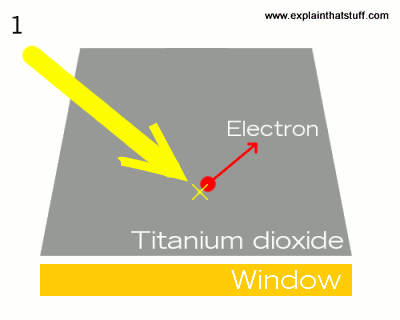
Homeowners are surprised to learn that self-cleaning glass is not science fiction—that it’s really available right now. In our experience, people tend to be impressed at how well it works, and how affordable it is.
It’s a product few have and few know to ask for, but did you know WeatherGard has self-cleaning glass? It sounds like science fiction but in a way it is simple chemistry.
Self-cleaning glass works by applying a thin coat of titanium dioxide (the material that gives white paint its color) onto the glass. It seems a bit silly to apply white color to the glass, but when we say thin, we mean thin. Our self-cleaning glass has a titanium dioxide layer less than 10 nm thick, applied by magnetron sputtering, and is invisible to the naked eye.

This titanium dioxide coating cleans the glass through a two stage process. First the when ultraviolet rays from the sun hit the titanium dioxide coating, electrons are generated. These electrons turn water molecules from the air into hydroxyl radicals that make chemical oxidation and reduction reactions happen all over the surface of the glass. These hydroxyl radicals attack dirt, breaking it apart into smaller pieces that the rain can then easily wash away.
The second part of the process involves the coating’s ability to turn the surface of glass from hydrophobic to hydrophilic, making it more receptive to water. So now instead of the dirty water beading up and leaving streaks, the water spreads more evenly across the glass then pulls along the entire surface and taking dirt along with it.
Many homeowners are surprised to learn that self-cleaning glass is available, and are pleasantly surprised to see how well it works. Give us a call and we’d be happy to tell you more.